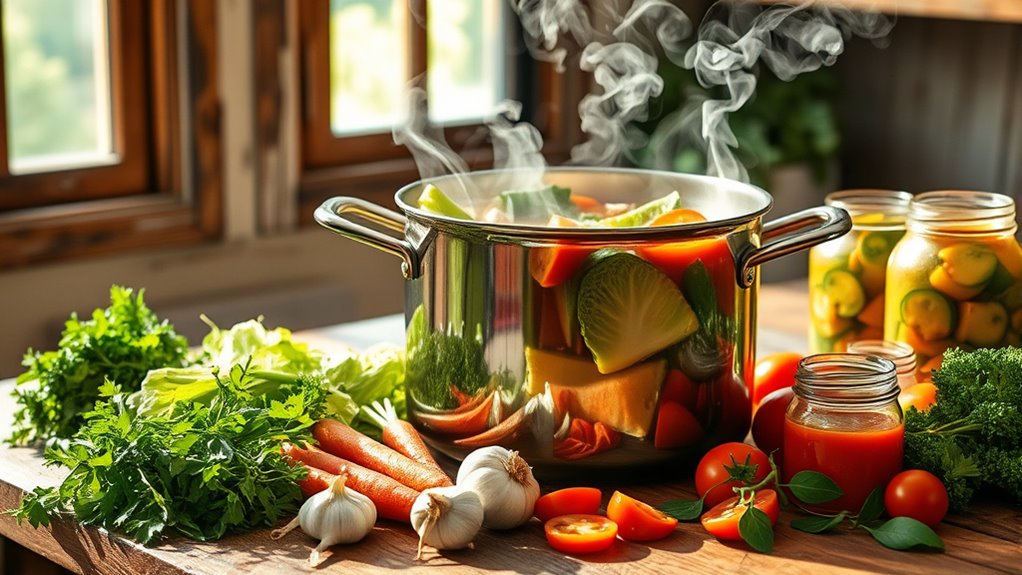Canning cabbage soup is a cozy, pantry-friendly project you can master with simple steps. Start by shredding a cabbage, onions, garlic, and carrots, then sauté in olive oil until softened. Add stock, a touch of vinegar, and a bright tomatoes boost, simmering until flavors meld. Pack hot into sterilized jars, leaving headspace, and process according to your canner’s times. This low‑calorie, fiber-rich soup stores beautifully, and if you keep reading, you’ll uncover extra tips to perfect it.
Ingredients and Quantity
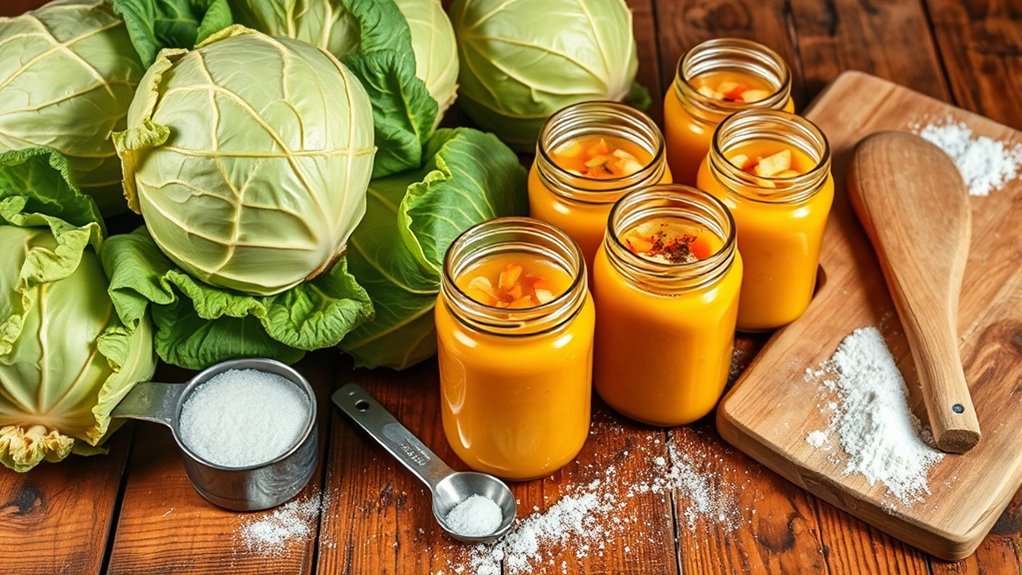
For a hearty batch, gather the core ingredients: one medium head of cabbage (about 2 to 3 pounds), 1 large onion, 2 cloves of garlic, 2 carrots, 1 stalk of celery, and 4 cups of vegetable or chicken broth. You’ll also want salt, pepper, and a splash of olive oil to awaken flavors. Cabbage varieties matter: green, savoy, and napa each lend distinct textures and sweetness, guiding your soup flavors. Consider a bay leaf for depth, or a pinch of thyme for brightness. Table below highlights balance at a glance.
| Ingredient | Amount | Purpose |
|---|---|---|
| Cabbage | 1 head | Body and bulk |
| Onion | 1 | Sweet base |
| Garlic | 2 cloves | Aroma and bite |
| Carrot | 2 | Subtle sweetness |
Preparations
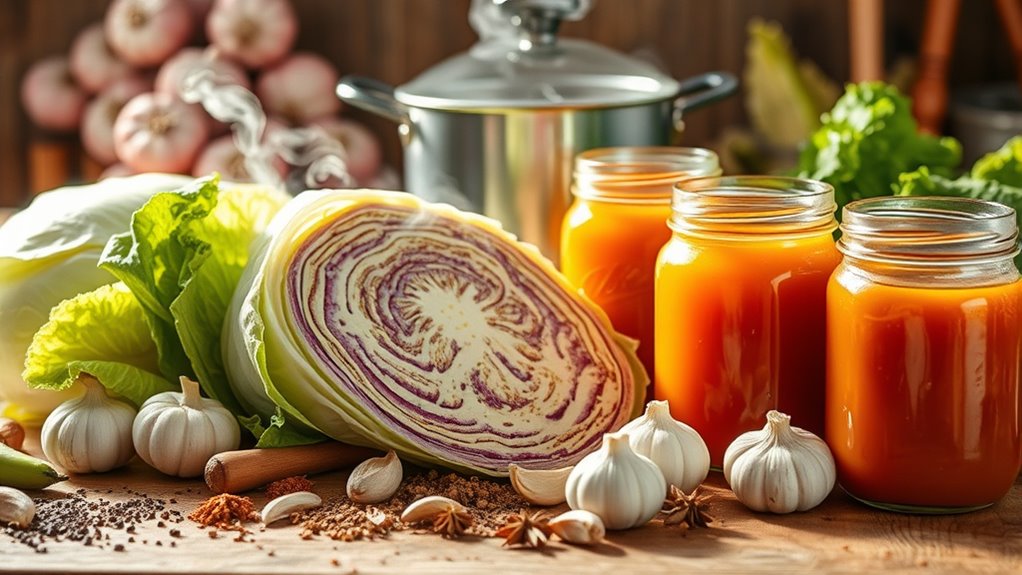
Start by prepping your base: rinse the cabbage, then core and shred it into rough, bite-sized ribbons so it’ll soften evenly as it simmers.
- Inspect cabbage varieties for texture and sweetness to tailor flavor
- Trim any tough ribs to guarantee uniform cooking
- Pat dry after rinsing to prevent splattering during sauté
- Slice onions and garlic fine enough to release aromatics quickly
- Plan for soup storage: cool promptly, refrigerate within two hours, and label jars
As you prep, stay mindful of balance: cabbage’s bite harmonizes with herbs and stock. Your readiness shapes the simmer, the aroma, and the final lid-lock of your canning. Cabbage varieties influence texture; soup storage preserves freshness and safety.
Kitchen tools or Kitchenware Required
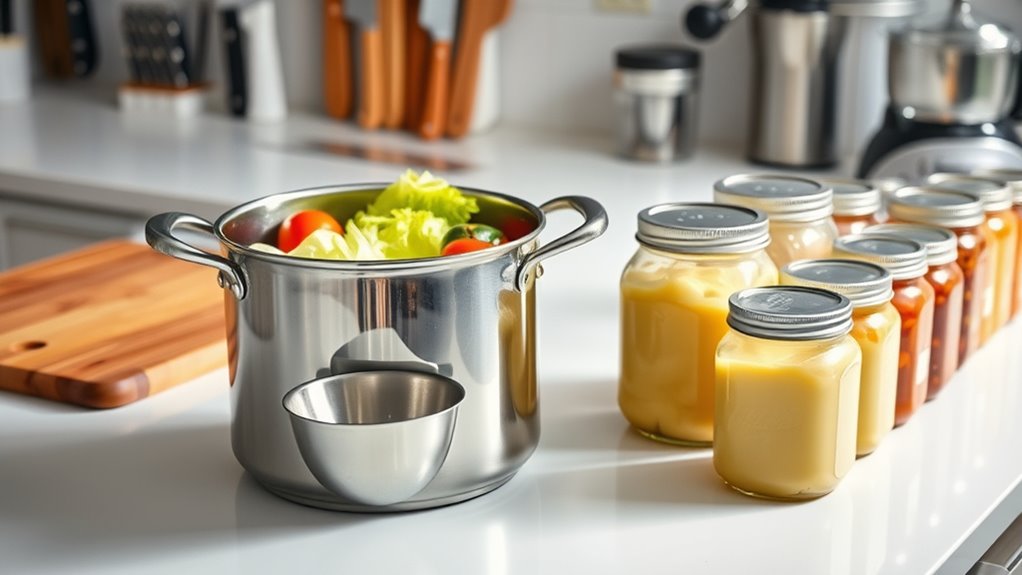
Gather the right gear before you begin: a sturdy Dutch oven or heavy-bottomed pot, a sharp chef’s knife, a cutting board, and a wide-mouthed jar funnel if you’re canning. You’ll want dependable canning supplies like jars, lids, bands, and a clean, dry work surface. Keep a ladle, tongs, and a magnetic jar lifter nearby for safe handling. Choose clear soup containers for portioning and storage, so flavors stay bright. This setup isn’t just practical—it’s your doorway to freedom in the kitchen, where control over texture and aroma lives. A well-chosen pantry setup keeps your process smooth and satisfying.
| Tool | Purpose |
|---|---|
| Dutch oven | Even heat for simmering |
| Knife | Precise chopping |
| Cutting board | Stable prep surface |
| Jar funnel | Easy filling |
| Jar lifter | Safe handling |
How to Cook
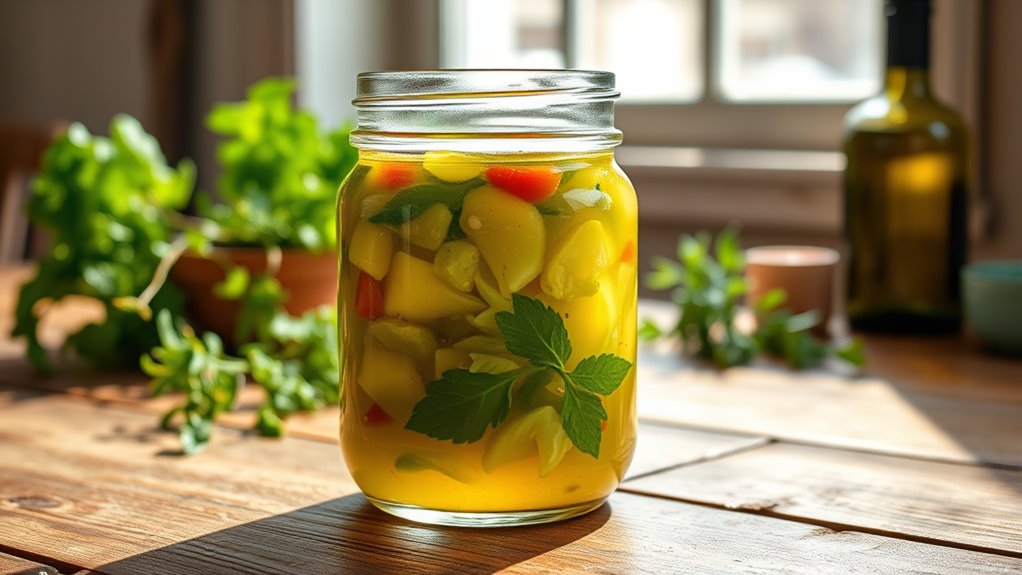
- Heat olive oil in a pot over medium heat.
- Sauté onions and garlic until translucent.
- Add cabbage and cook until softened.
- Pour in stock, tomatoes, and a touch of vinegar.
- Bring the mixture to a gentle boil.
- Reduce heat, cover, and simmer until cabbage is tender and flavors blend.
- Taste and adjust seasoning, balancing salt, tang, and warmth.
- Finish with a drizzle of olive oil or a sprinkle of fresh herbs for brightness.
Tips:
- Maintain a gentle simmer for even tenderness.
- Layer acidity and fat to enhance brightness.
- Toast aromatics before simmering.
- Taste frequently and adjust salt carefully.
- Use fresh herbs or oils to finish the dish.
How to Serve
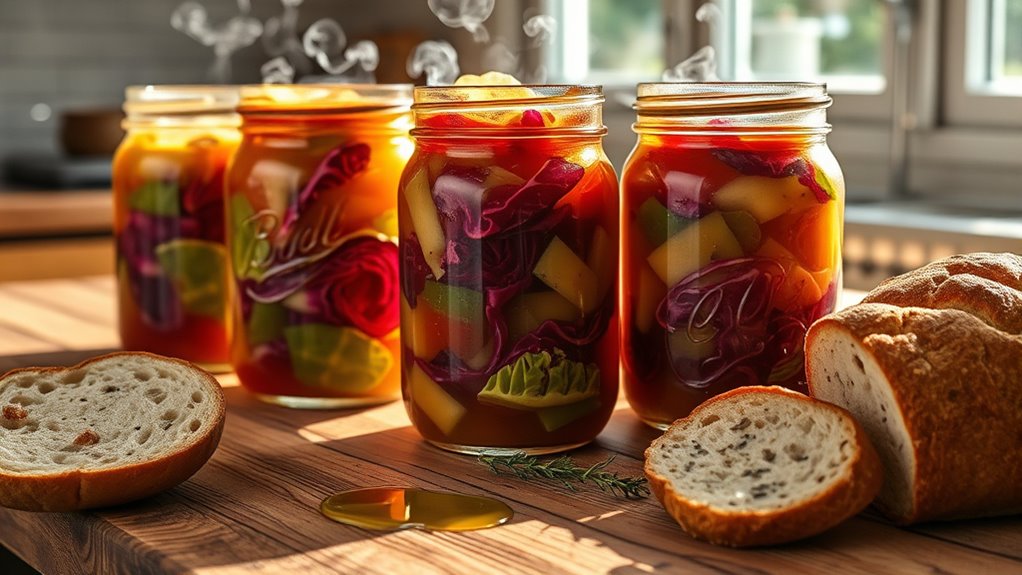
To serve cabbage soup, ladle it into warmed bowls and lay a crust of crust? You’ll want a generous portion that lets aromatics arc upward as you lift the spoon. Present it with confidence, because simplicity is your ally; a bright finish can elevate the experience without complicating it. For serving suggestions, offer a small wedge of crusty bread, a drizzle of olive oil, and a scatter of fresh thyme or parsley to brighten the bowl. Garnish ideas include a dollop of yogurt or sour cream for creaminess, a pinch of cracked pepper for bite, and thinly sliced scallions for color. Maintain steady portions, invite conversation, and let clear aromas guide the moment. This is comfort, designed for your sense of liberation and appetite.
Tips
Stir in a touch of patience as you cook: cabbage can release a gentle sweetness when simmered slowly, so keep the heat steady and let the flavors mingle rather than rush toward a single note.
Stir with patience; cabbage sweetens softly when simmered slowly, letting flavors mingle.
Tips
- Embrace canning techniques that preserve depth: control bubbles, vent steam, and maintain consistent pressure.
- Layer aromatics intentionally; a whispered herb or subtle spice can redefine soup variations.
- Taste as you go, adjusting salt and acidity to align with your preferred brightness.
- Vent, reseal, and label jars for organized, confident storage after canning.
- Focus on texture balance between tender cabbage and soft vegetables to elevate future servings.
Food Value and Benefit
The prepared cabbage soup offers a nutritious and wholesome meal option. It provides lean protein from the stock and dietary fiber from the cabbage, supporting digestive health. The cooking process enhances the flavors while preserving most of the vitamins and minerals, making it a nutrient-dense dish.
Benefits of eating this cabbage soup include:
- Supports digestion due to high fiber content
- Provides steady energy release with low calorie density
- Contains essential vitamins such as Vitamin C and Vitamin K
- Supplies important minerals including potassium and magnesium
- Helps maintain hydration and supports metabolism
- Offers a comforting, nutrient-rich option that fuels both body and mind
This recipe is a convenient and nourishing choice that combines taste and health in every bowl.
Frequently Asked Questions
How Long Does Canned Cabbage Soup Last in Storage?
Canned cabbage soup lasts about 1 to 2 years unopened; once opened, refrigerate and use within 3 to 4 days. For best quality, monitor canned soup shelf life and store conditions, noting flavor and texture may fade over time.
Can I Substitute Frozen Cabbage for Fresh Cabbage?
Substituting cabbage works: frozen cabbage can replace fresh, with a slight texture change. About 90% of frozen vegetables retain nutrients. You’ll notice flavor nuance, but you’ll still enjoy. Consider frozen vegetable benefits in your canning and cooking.
Is Pressure Canning Safe for Soup With Vegetables?
Pressure canning soup with vegetables can be safe if you follow tested guidelines; otherwise, it’s risky. You’ll respect soup safety, prioritize proper pH and processing times, and embrace vegetable preservation without compromising your freedom to cook boldly.
Do I Need to Add Salt or Preservatives to Canning Jars?
Crumbling jars symbolize caution: you don’t need salt or preservatives for safe canning. You can use salt alternatives or rely on proper preserving methods, letting acidity, sugar, or spices carry flavor while keeping safety intact.
Can I Use Diced Tomatoes Instead of Cabbage?
Yes, you can, but expect a lighter, tangier soup when you swap in diced tomatoes. This opens soup variations and keeps depth by balancing acidity. You’ll celebrate freedom in flavor, embracing freshness while preserving with care.
